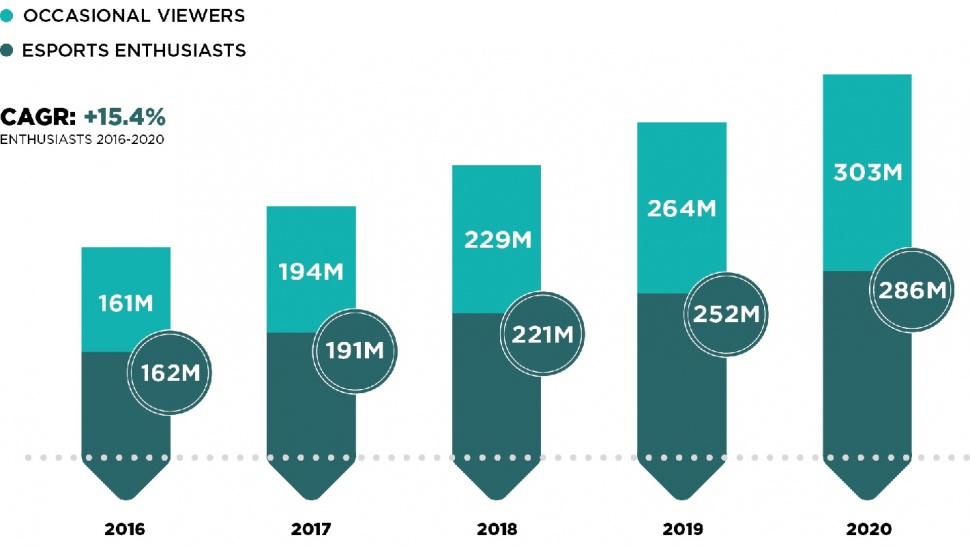February 2017 data from esports analyst firm Newzoo indicated that global esports revenues would reach almost $1.5 billion by 2020, up from $696 million in 2017. A Juniper Research study published this month suggested that esports and streamed games content would drive $3.5 billion in revenues worldwide by 2021, up from $1.8 billion in 2017.
Esports numbers in terms of audience are huge. Our Global Esports Market Report shows that 191 million consumers will watch esports frequently in 2017, with another 194 million tuning in occasionally. Gamer numbers are even higher at 2.2 billion worldwide across all platforms. But game enthusiasts who play and/or watch esports have strong preferences for specific games. For brands, media, investors, and other businesses interested in entering esports, understanding the engagement of individual games in terms of players and viewers is crucial. This is one of the most common reasons for our clients to subscribe to our services.

For this post, we focused on three high-level but essential questions: How do some of the biggest esports franchises compare in terms of players and viewers? How big is the overlap between gamers and viewers? What is the overlap between franchises in terms of reach?
The analysis focuses mainly on PC games League of Legends, Counter-Strike: Global Offensive (CS:GO), and Dota 2 but also includes a comparison with multi-platform games Overwatch and Hearthstone. The figures are aggregated across 10 Western countries: U.S., Canada, Germany, U.K., France, Italy, Spain, Netherlands, Belgium, and Sweden.
Esports Content Reaches Consumers That Do Not Play
Looking at the combined fanbase of the top three global esports franchises (League of Legends, CS:GO, and Dota 2), we see that 23% of the fanbase (both players and viewers) in the 10 Western countries watch esports content of these games but do not play the games. This means that 42% of these esports viewers don’t play the game they watch. For these franchises, players have often moved on to other games or spend their time elsewhere, while staying invested in the professional competitive gaming scene. Esports gives lapsed game enthusiasts an outlet to still enjoy the entertainment provided by games without having to develop or keep up with the skills required to play.
Especially for CS:GO, there is a large group of fans who only watch esports of the game. This makes sense, as the title is an incredibly competitive, intense, and reflex-based game. Additionally, CS:GO is easy to understand for people who do no play or have not played for a long time, attracting players from other shooter games with less developed esports scenes.
North America Leads In Brand And Sports Involvement Boom
North America is the largest esports market, with revenues of $257 million in 2017. This will more than double to reach $607 million by 2020. Most of these revenues come from sponsorships, which will total $113 million in 2017. This is partly due to North American teams that have welcomed a lot of new non-endemic sponsorships and the region hosting several of the world’s largest leagues and tournaments that generate a high amount of sponsorship money. The 25 million Enthusiasts in North America generate twice as much revenue per year than in any other region, $10.36 per fan per year, highlighting the lead that American media companies and brands have taken. The involvement of American and European sports teams and their marketing agencies will continue this year, pushing brand investments up even further. The impact of traditional sports and media are already reflected in esports’ fastest-growing revenue stream: media rights trade. The sales of esports content licenses are expected to generate $95 million this year on a global scale, up 82% from 2016.
All of the graphs in this post and more can be found on our resources page, where they are continually updated to reflect any changes in our estimates.




Share the News